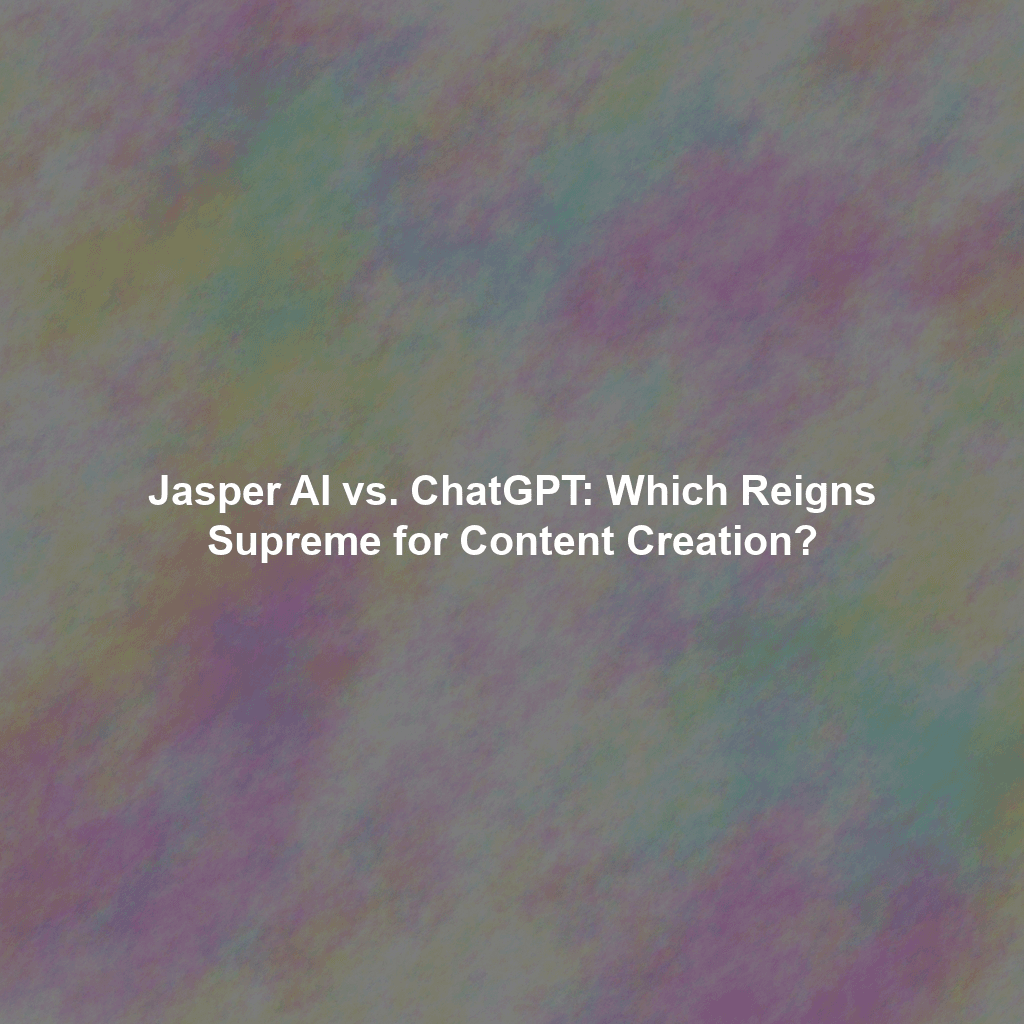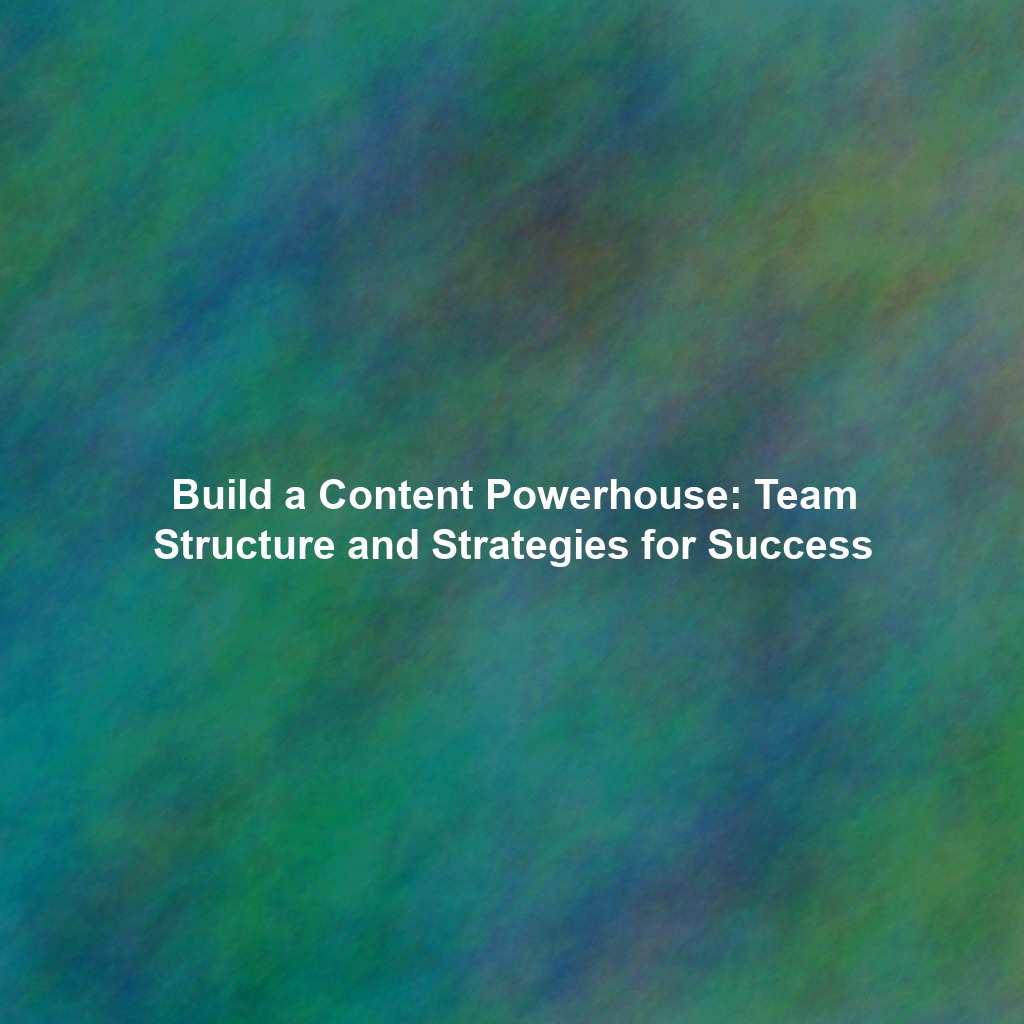Two names frequently surface in discussions about content generation: Jasper AI (historical market leader) and ChatGPT (the all purpose chatbot tool). Both are powerful, but they are far from interchangeable. As someone who has navigated the complexities of scaling businesses and leveraging technology for efficiency – and is now building Content Hurricane – I’ve observed that the “better” tool isn’t a universal truth; it depends entirely on your specific goals, workflow, and appetite for hands-on management. This article will dissect Jasper AI and ChatGPT, comparing their strengths, weaknesses, and ideal use cases to help you determine which best fits your content strategy.
—Understanding the Core Philosophy: Specialized vs. Generalist
At their fundamental level, Jasper AI and ChatGPT operate with different philosophies. Understanding this distinction is crucial to making an informed decision:
ChatGPT: The Versatile AI Chatbot
Developed by OpenAI, ChatGPT is a large language model (LLM) designed as a conversational AI chatbot. Its primary strength lies in its versatility. You can use it for a vast array of tasks, from writing code and answering complex questions to drafting emails and, of course, generating text for blogs. Its interface is typically clean and intuitive, making it highly accessible for general use.
Think of ChatGPT as a highly intelligent, adaptable digital assistant. It’s excellent for:
- Brainstorming: Generating ideas, outlines, and different angles for topics.
- Drafting diverse content: From short social media posts to longer article sections.
- Exploration: Testing different tones, styles, or approaches to a topic.
- Problem-solving: Using its conversational nature to refine ideas through iterative prompts.
Jasper AI: The Marketing-Focused Content Engine
Jasper AI, on the other hand, is a specialized AI writing assistant built with marketing and content creation specifically in mind. While it leverages underlying large language models (including some from OpenAI), Jasper integrates these with features tailored for content professionals. It aims to streamline the content workflow, ensure brand consistency, and produce marketing-specific copy. It’s less about general conversation and more about structured content production.
Jasper is designed for:
- Structured content workflows: Offering templates for various marketing assets (blog posts, ad copy, emails, product descriptions).
- Brand voice consistency: Features designed to maintain a consistent tone and style across all generated content.
- SEO integration: Often includes or integrates with tools for SEO optimization, like Surfer SEO.
- Team collaboration: Built with features for multiple users and managing content at scale.
Feature Showdown: A Deeper Dive
Let’s break down the key features and capabilities to see how these two tools stack up.
1. Content Generation & Quality
- ChatGPT:
- Strengths: Highly versatile, capable of generating diverse content formats and tones based on effective prompting. Its advanced models (like GPT-4, available in paid tiers) can produce remarkably human-like and coherent text. Excellent for general informational content and creative writing prompts.
- Weaknesses: Output quality is heavily dependent on prompt engineering. Without specific, detailed instructions, it can be generic, repetitive, or prone to “hallucinations” (generating inaccurate information). It lacks built-in templates or workflows for specific marketing content.
- Jasper AI:
- Strengths: Offers over 50 templates tailored for specific marketing needs, making it easier to generate focused content quickly. Its “Boss Mode” and “Commands” allow for more guided long-form content creation. Designed to produce “on-brand” outputs efficiently.
- Weaknesses: Can sometimes produce repetitive phrases if not carefully managed. While powerful, it might feel more restrictive than ChatGPT for highly experimental or generalized tasks, relying more on its structured templates.
2. SEO Capabilities and E-E-A-T Compliance
This is where the distinction becomes particularly critical for businesses focused on organic growth and search engine visibility. As a former CEO and CFO, I understand that content isn’t just about words; it’s about measurable outcomes.
- ChatGPT:
- SEO: ChatGPT itself doesn’t have inherent SEO analysis tools. It can, however, integrate keywords naturally if prompted correctly, suggest related terms, and help draft meta descriptions. It requires the user to have a strong understanding of SEO principles and to conduct external research.
- E-E-A-T: As a general LLM, ChatGPT inherently struggles with demonstrating E-E-A-T. It doesn’t have “experience” or “expertise” in the human sense. Content generated solely by ChatGPT, without significant human review, fact-checking, and the infusion of genuine expertise, will likely fall short of Google’s E-E-A-T standards. Trustworthiness, especially for Your Money or Your Life (YMYL) topics, requires verifiable human input and authoritative sourcing.
- Jasper AI:
- SEO: Jasper offers an “SEO Mode” and integrates directly with SEO tools like Surfer SEO (often requiring an additional subscription). This allows users to optimize content directly within Jasper based on real-time SERP data, keyword analysis, and content briefs. This integration streamlines the SEO workflow significantly.
- E-E-A-T: While Jasper, like any AI, cannot possess human E-E-A-T, its design facilitates compliance more directly. Features like “Brand Voice” and “Knowledge Assets” help it align content with your established expertise. Critically, its structured approach encourages users to infuse their own knowledge and data. However, robust human editing, fact-checking, and the explicit demonstration of author expertise remain paramount. Specialized AI tools, like Content Hurricane, are explicitly built with E-E-A-T in mind, training their AI on expert-level content to better meet these stringent Google guidelines. This is a critical distinction if your goal is truly high-ranking, authoritative content.
3. Ease of Use and Workflow
- ChatGPT:
- Interface: Extremely simple, chat-based interface. Just type and get a response. This simplicity makes it very user-friendly for ad-hoc tasks.
- Workflow: Highly flexible, but lacks structured workflows. Generating a full article often involves multiple prompts and manual copying/pasting between chat and your document. It demands strong “prompt engineering” skills to get optimal results.
- Jasper AI:
- Interface: More feature-rich, which can initially seem busier. It offers dedicated templates, documents, and a “Chat” mode similar to ChatGPT.
- Workflow: Designed for a more guided and structured content creation process. “Recipes” (pre-built workflows) and templates help streamline content generation. It aims for a faster content creation process by reducing the need for constant, detailed prompting for common marketing tasks.
4. Pricing and Accessibility
This is often the deciding factor for many users, particularly those with budget constraints.
- ChatGPT:
- Free Tier: ChatGPT 3.5 is available for free, making it incredibly accessible for individuals and small teams to experiment with AI writing.
- Paid Plans: ChatGPT Plus ($20/month) offers access to more advanced models (like GPT-4), higher usage limits, and sometimes faster response times. Enterprise plans offer even more features and customizability.
- Jasper AI:
- Free Trial: Typically offers a 7-day free trial.
- Paid Plans: Starts at a higher price point (e.g., $39-$49/month for starter plans, scaling up for “Boss Mode” and business tiers). Pricing often depends on word count and features. This makes it a more significant investment, targeting businesses and professional content creators.
From a purely cost perspective, ChatGPT is the clear winner for casual or experimental use. However, when evaluating ROI, the specialized features and integrations offered by Jasper (or solutions like Content Hurricane) can justify the higher price point for businesses seeking scalable, performance-driven content.
—Use Cases: Who Benefits Most?
Choose ChatGPT If:
- You need a versatile AI for general tasks: From coding assistance to brainstorming creative ideas or summarizing complex information.
- You’re on a tight budget: The free tier provides substantial utility for basic content drafting.
- You’re comfortable with prompt engineering: You’re willing to experiment and refine your prompts to get the desired output.
- You have strong human editors: You’ll be heavily involved in fact-checking, adding depth, ensuring E-E-A-T, and injecting brand voice.
- Your content needs are intermittent: You don’t require a constant, high volume of marketing-specific content.
ChatGPT is an excellent “digital Swiss Army knife” for individuals or small businesses needing flexible AI assistance across various functions, including initial content drafts.
Choose Jasper AI If:
- You’re a marketing team or professional content creator: Your primary focus is on generating high-quality marketing copy at scale.
- Brand consistency is paramount: You need tools to help maintain a consistent voice and style across all content.
- SEO integration is critical to your workflow: You want built-in or seamlessly integrated SEO optimization features.
- You value structured workflows and templates: You prefer a guided approach to content creation for efficiency.
- You’re willing to invest for specialized features: The ROI on faster, more streamlined, and optimized marketing content justifies the cost.
Jasper AI is designed for those who view content creation as a core, strategic business function that requires dedicated tools for efficiency and consistency.
—The Human Element: The Unifying Factor
Regardless of whether you choose Jasper AI, ChatGPT, or another AI writing tool, one truth remains absolute: the human element is irreplaceable. My experience building and leading companies has reinforced that data and reasoned analysis are paramount, but they must be coupled with human insight and strategic thinking. This applies directly to AI-generated content:
- Fact-checking and Accuracy: AI can make mistakes. Always verify information, especially for YMYL topics.
- E-E-A-T: True E-E-A-T comes from verifiable human experience, expertise, and a demonstrated track record of trustworthiness. AI can assist in presenting this, but it cannot create it.
- Brand Voice and Emotional Resonance: While AI can mimic tones, the subtle nuances, the unique personality, and the genuine empathy that connect with an audience must be infused by a human.
- Strategic Direction: AI is a tool; it doesn’t set strategy. You, the content strategist, determine the “why” behind the content, the target audience, and the overarching goals.
- Refinement and Polish: AI provides drafts. Humans transform those drafts into compelling, high-performing content that stands out.
For platforms like Content Hurricane, this human-AI synergy is foundational. It’s about combining AI’s scalability with deep training on expert-level content, specifically designed to meet SEO and E-E-A-T standards, ultimately delivering content that significantly increases inbound leads. The AI handles the heavy lifting, but the strategic direction and final polish are always rooted in expert human oversight.
—Conclusion: It’s Not a Battle, It’s a Choice
There isn’t a definitive “better” tool between Jasper AI and ChatGPT. Each excels in different arenas. ChatGPT offers unparalleled versatility and accessibility, making it an excellent general-purpose AI assistant for a wide range of tasks, including initial content drafts. Jasper AI, conversely, is a specialized powerhouse for marketing content, offering structured workflows, brand voice consistency, and SEO integrations that streamline professional content production.
Your decision should be based on a clear understanding of your content needs, budget, and desired workflow. If you need a flexible, cost-effective AI for diverse tasks and are prepared to heavily manage and refine its output, ChatGPT is a strong contender. If your focus is on scalable, on-brand, SEO-optimized marketing content that integrates seamlessly into a professional workflow, Jasper AI (or a similarly specialized solution) is likely the more effective investment.
Ultimately, both tools are most effective when viewed as powerful collaborators, not autonomous content creators. The real competitive edge in content marketing comes from intelligently leveraging AI to amplify human expertise, drive efficiency, and produce content that genuinely connects with your audience and achieves measurable business results. The smartest approach is always to blend the power of AI with your own high-IQ, strategic insight, ensuring that every piece of content serves a clear purpose and delivers tangible value.
 Skip to content
Skip to content

